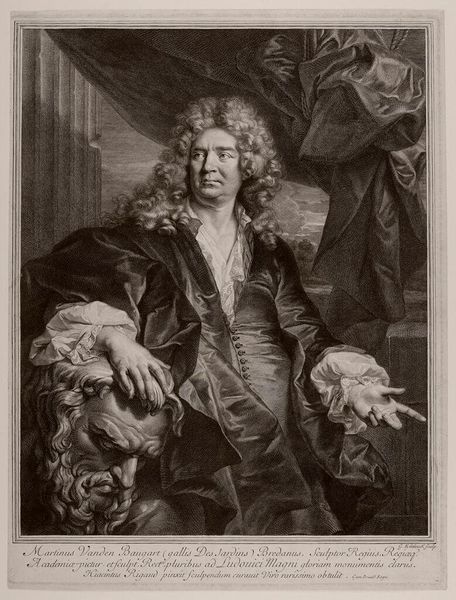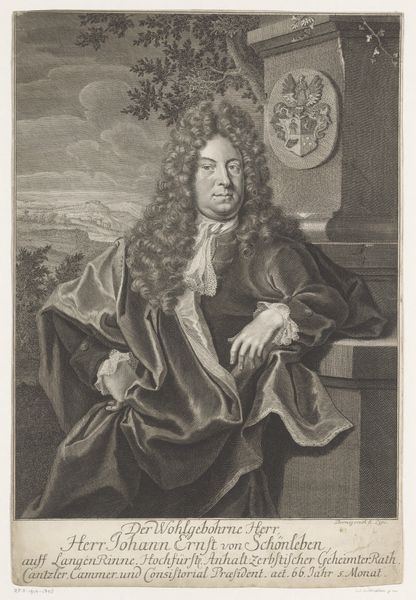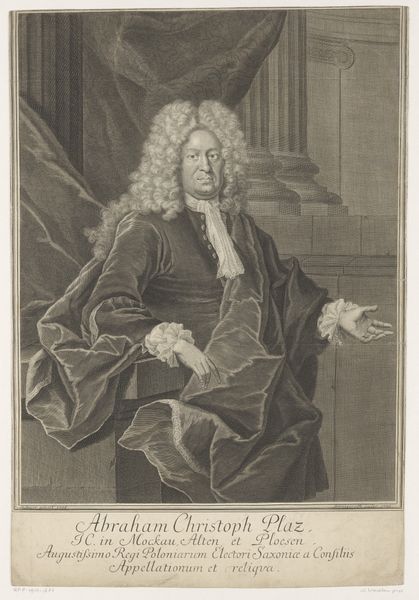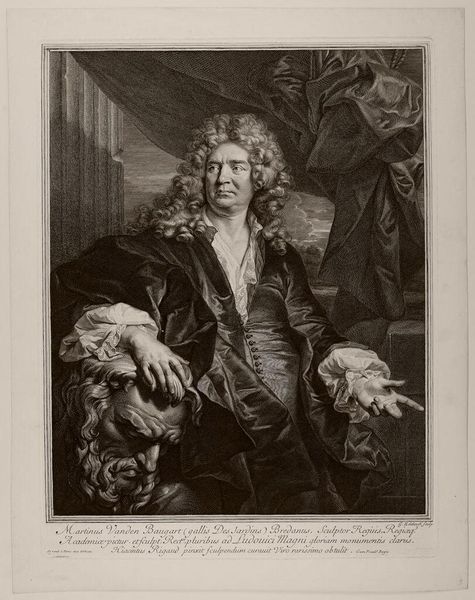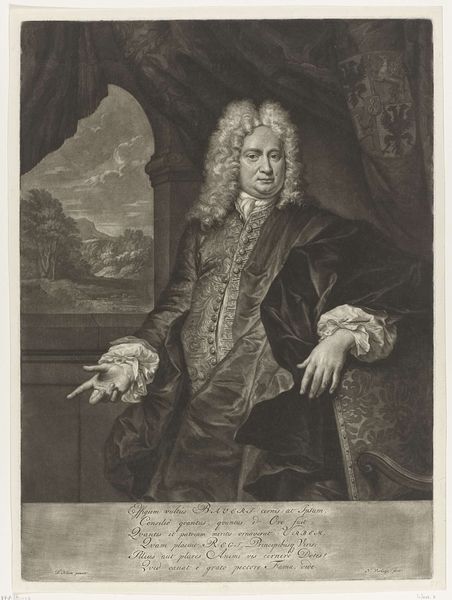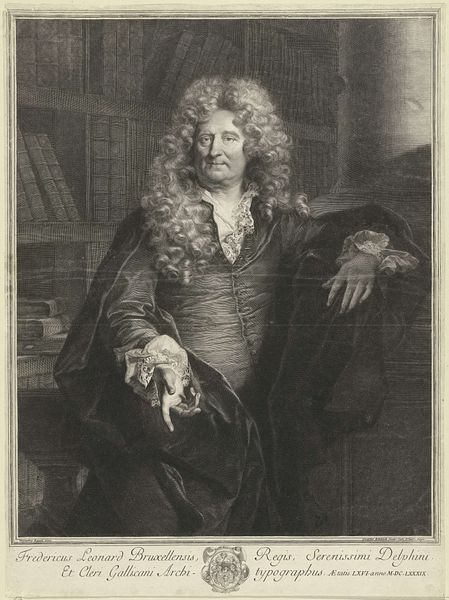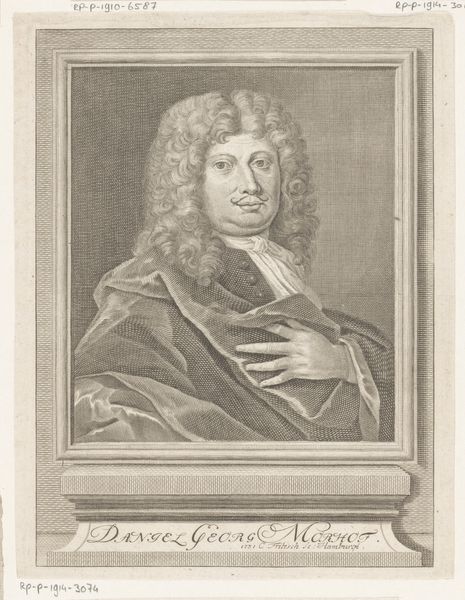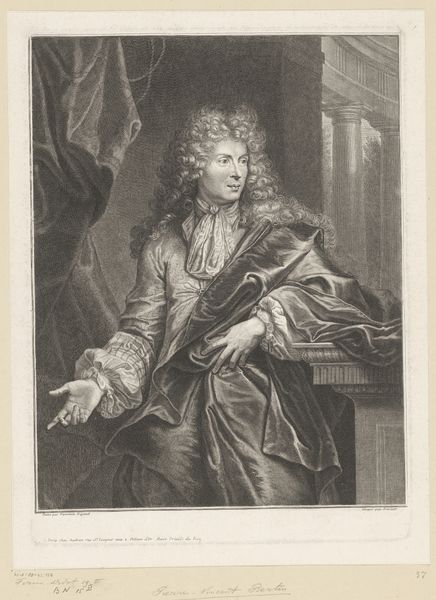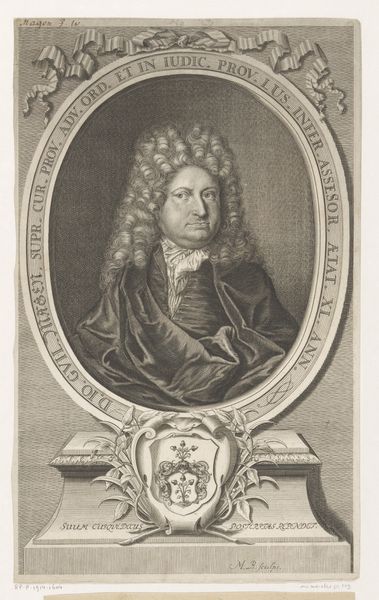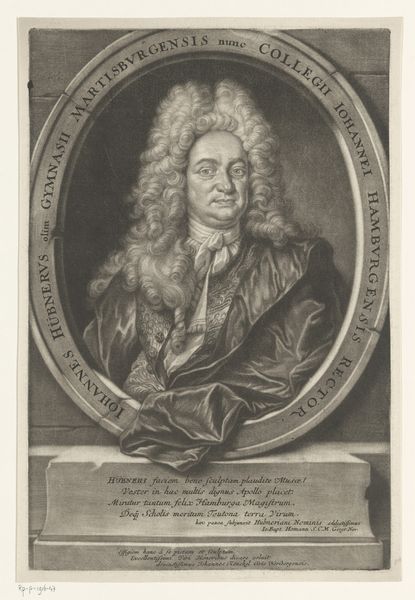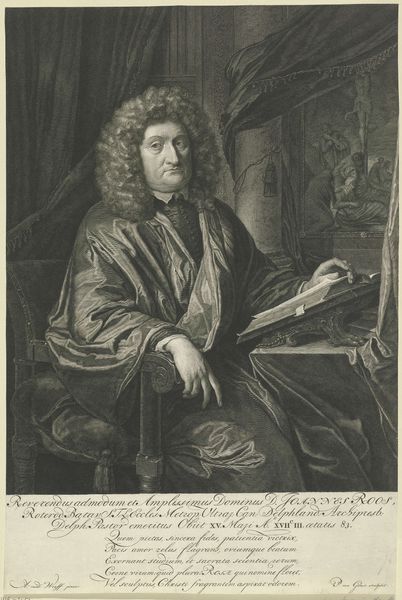
drawing, print, engraving
#
portrait
#
drawing
#
baroque
# print
#
engraving
Dimensions: sheet: 21 1/4 x 16 9/16 in. (53.9 x 42.1 cm) plate: 18 3/8 x 14 in. (46.6 x 35.5 cm)
Copyright: Public Domain
Curator: What an intriguing composition! It's dominated by high contrast—dark and light—creating a dramatic effect. Editor: Indeed. This is a print by Gérard Edelinck, from 1698, housed here at the Metropolitan Museum of Art. It depicts the sculptor Martin Vanden Bogaert, also known as Desjardins. It really reflects the status afforded artists in Louis XIV’s France, doesn't it? Curator: Absolutely. Note the tactile quality Edelinck achieves through engraving. The textures seem so real, from the subject's elaborate wig to the almost palpable stoniness of that carved head, looks like Hercules or another demigod! Editor: Precisely. The hand resting possessively on the sculpture is really interesting. It speaks volumes about artistic creation as a potent display of power. This isn't just a likeness; it’s a statement about the role of artists under Louis XIV and the cultural capital they possessed. Curator: True, and consider how the artist uses the lines of the drapery in the background to direct our eye. The folds both frame the subject and lead us toward him, almost as if curtains were drawn to reveal him on a stage. I think the engraving is really successful for focusing your attention in that manner. Editor: The staging creates a very calculated visual strategy, emphasizing Desjardin’s contributions to Louis' grand vision. Curator: The very meticulous cross-hatching on Desjardin's garment compared to the smooth quality of the statue creates a sense of artistic mastery being shown. Editor: And it subtly hints at the relationship between artist, patron, and the art object itself. It's really quite a dense work. Curator: Examining the social positioning that portraiture of artists played during the period, in contrast with this almost Baroque feel captured from its technique, reveals a deeper understanding about how both helped define its cultural perception and influence at the time. Editor: A lot to consider in this single engraving!
Comments
No comments
Be the first to comment and join the conversation on the ultimate creative platform.
